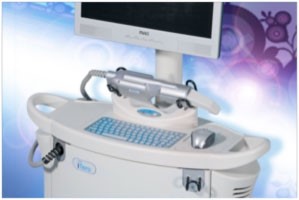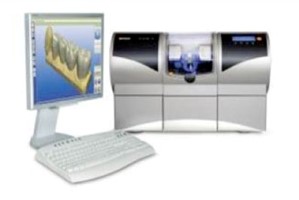CAD/CAM Restorations
What is CAD/CAM Restoration?
CAD/CAM is an acronym that means computer-aided design/computer-aided manufacturing. CAD/CAM technology is used to help dentists and dental lab technicians fabricate precise shapes and sizes for dental restorations including inlays, onlays, crowns and bridges. Aventura Dental Arts uses this technology to provide our patients with durable, esthetic, well-fitted single and multiple tooth restoration in a more efficient manner than available in most dental practices – in a single visit!
The first step in using dental CAD/CAM is tooth preparation. Next, an impression is taken, not the traditional messy mold, but a digital impression with iTero (pictured below) that sends the prepared tooth’s exact dimensions into a computer.

 ITero, Digital Impressions
ITero, Digital Impressions
Our dentist and lab technicians use CAD/CAM technology to design the anatomical features, size and shape of the tooth restoration on a computer. The CAD/CAM computer screen displays a 3-D custom image of your teeth and gums, allowing your dentist to draw a precise design of the tooth restoration. A ceramic block, selected to match your specific colored tooth is mounted into the CAD/CAM machine (CEREC MC XL milling unit pictured below) and fabricates the restoration in the milling chamber, crafting the tooth-like ceramic material into a precise replica of your restoration. In as little as 6 minutes your restoration is ready to be fitted.
This technology is available to any dentist through an electronic network, where the digital impressions are sent via the internet to a laboratory. However, Aventura Dental Arts has installed this equipment in an onsite laboratory eliminating the need to send your medical information anywhere and milling your restoration in our own laboratory for immediate fitting. No second and third appointments, saving everyone time and money!
 This technology also enables Aventura Dental Arts to create crowns made entirely of porcelain that is strong enough to withstand biting forces. Traditionally, crowns were built upon a metal core. All-porcelain crowns maintain a translucency that makes them hard to tell from natural teeth. Without metal, the problem of the dark blue/gray line at the edge of the gums is eliminated. This allows your dentist to place the edge of the crown above the gum line, which is healthier for your tooth and gums.
This technology also enables Aventura Dental Arts to create crowns made entirely of porcelain that is strong enough to withstand biting forces. Traditionally, crowns were built upon a metal core. All-porcelain crowns maintain a translucency that makes them hard to tell from natural teeth. Without metal, the problem of the dark blue/gray line at the edge of the gums is eliminated. This allows your dentist to place the edge of the crown above the gum line, which is healthier for your tooth and gums.

Book your appointment today
Booking your appointment is easy, and our dedicated staff is here to help you every step of the way.

